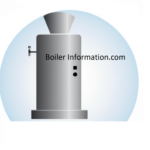Components – The Furnace
Industrial boilers are large pieces of equipment that are used to heat water or other fluids to generate steam, which is then used to power large industrial machines such as turbines, generators, and pumps. The furnace is the primary component of an industrial boiler and is responsible for generating the necessary heat to create steam. This article will explain how a furnace of an industrial boiler works.
The furnace of an industrial boiler is typically made up of several components: the combustion chamber, the burner, the heat exchanger, and the fuel system. The combustion chamber is where the fuel is burned and the heat is generated. The burner is responsible for supplying the fuel, while the heat exchanger is responsible for transferring the heat from the combustion chamber to the water or other fluids. Finally, the fuel system is responsible for supplying the fuel to the burner.
When the boiler is turned on, fuel is supplied to the burner, which ignites the fuel. This combustion process releases heat, which is then transferred to the heat exchanger. The heat exchanger is made up of a series of tubes, through which the heated air passes. As the air passes through the tubes, it heats up the water or other fluids inside, which is then converted into steam.
The steam is then used to power the industrial machinery. As the steam is used, the pressure inside the boiler increases, causing the temperature of the furnace to increase. This increase in temperature is regulated by a series of safety valves, which open up when the pressure inside the boiler reaches a certain level. This allows the release of excess pressure, ensuring that the boiler does not overheat or explode.
The furnace of an industrial boiler is a complex piece of machinery that is responsible for providing the necessary heat to generate steam. It is made up of several components, each of which plays an important role in the overall process. Without the furnace, industrial boilers would not be able to generate the necessary heat to create steam, and thus, power the industrial machinery.
